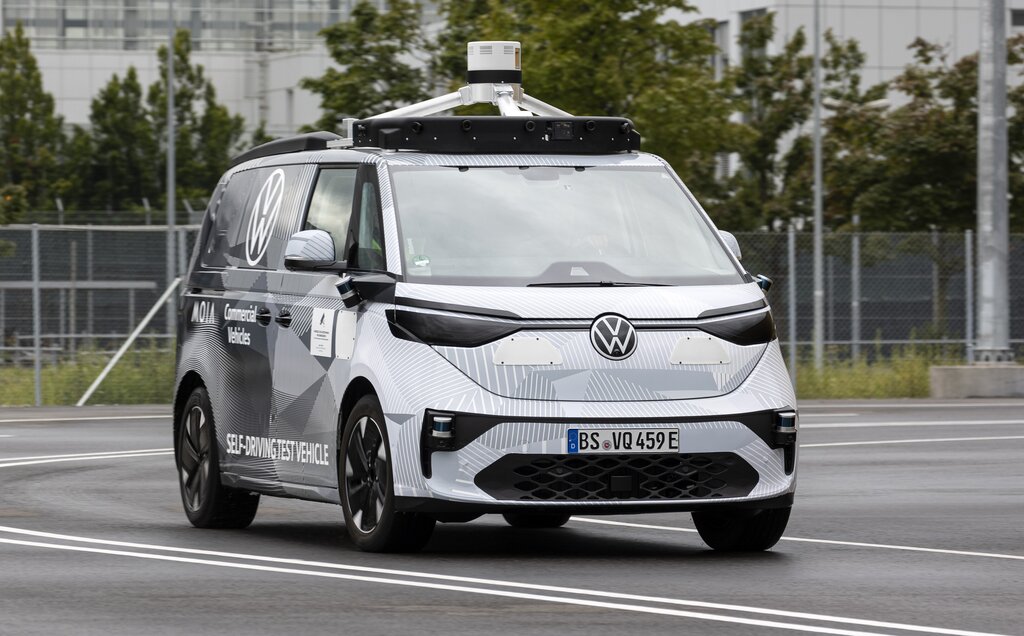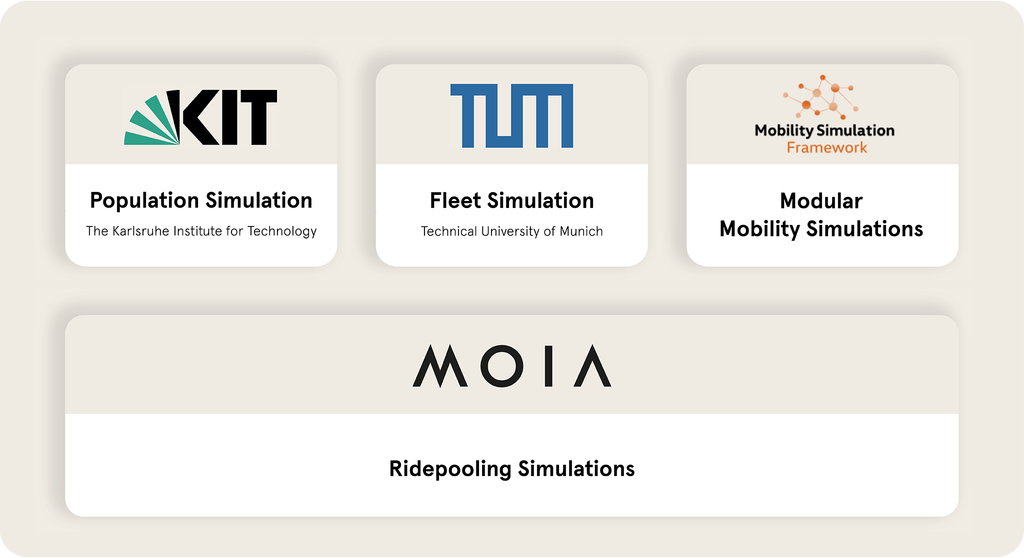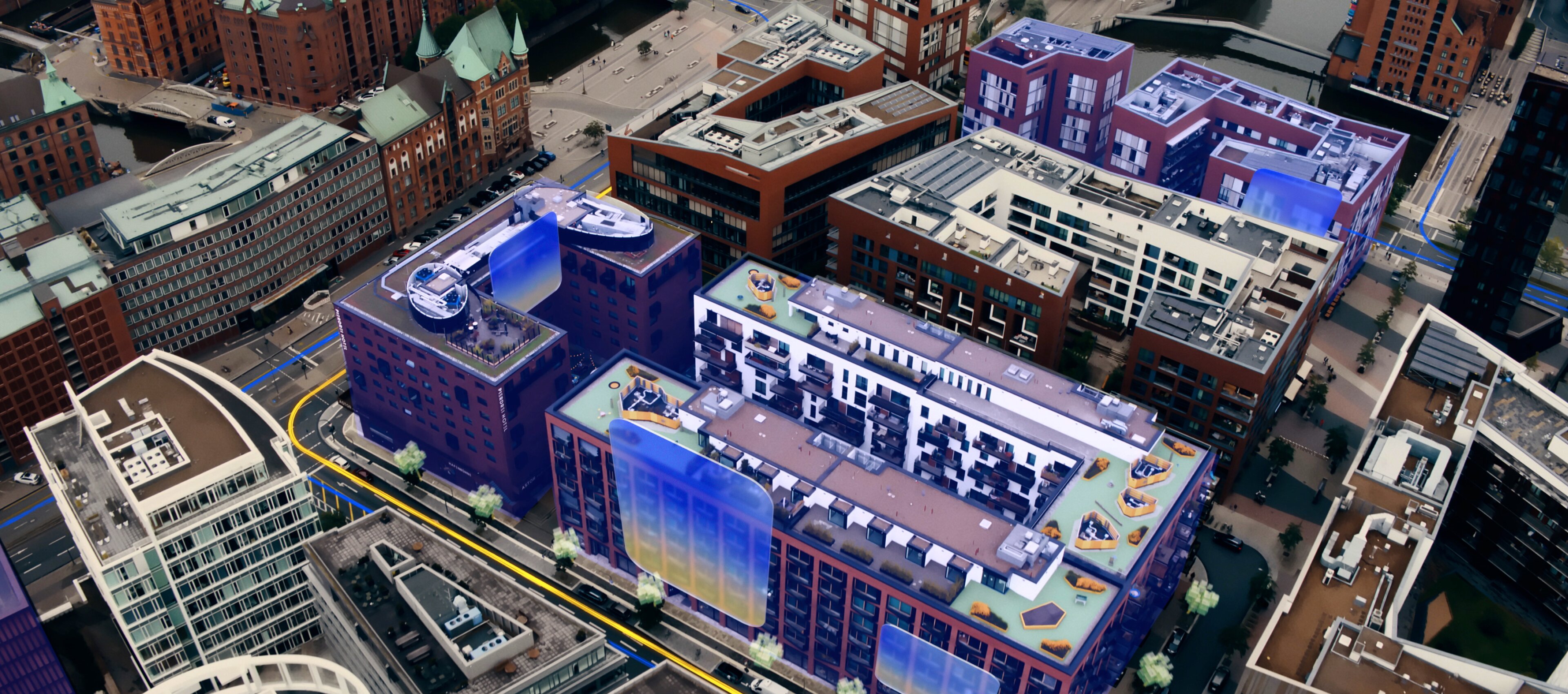At MOIA, we are using autonomous driving as a key technology to accelerate the expansion of ridepooling. As a tech company, our goal is to turn autonomous vehicles into intelligent tools for safe, affordable and sustainable mobility in cities.
" An important piece of the puzzle is missing in order to be able to offer public transport at the same level throughout Hamburg in a few years and, in perspective, to be able to give every Hamburg resident access to a public mobility service within 5 minutes, so that public transport becomes even more attractive and a good alternative to the private car. This piece of the puzzle can be on-demand ridepooling offers."
Dr Anjes Tjarks, Senator for Transport and Mobility Change of the Free and Hanseatic City of Hamburg
Together with Volkswagen Commercial Vehicles we have made it our goal to develop an autonomous, internationally scalable ridepooling system in Hamburg. Because there is great potential in autonomous ridepooling services in particular: It reduces traffic, increases road safety, and thus makes a greater contribution to the mobility revolution and even more liveable cities. On top of the technological and legal challenges we face with autonomous ridepooling, we still have to work above all on its acceptance by city dwellers and future users.
From the autonomous vehicle to autonomous service
For modern transport systems, integrated, digitised processes, electric fleets and autonomous driving systems are today becoming a prerequisite. For us, however, they are also an important building block for our further development as MOIA. Autonomous driving allows us to expand our existing fleet to make our service accessible to even more people and be more flexible in adapting to their needs. Because, for example, we can then be on the road in outlying districts as well - or offer even more trips at peak times.
Close partnerships are particularly important for the whole thing to find its way onto the streets commercially in the future: The vehicle, the ID. Buzz AD, was developed by Volkswagen Commercial Vehicles. And we at MOIA take care of turning the autonomous vehicles into efficient tools for an autonomous mobility service. The city of Hamburg is our "blueprint" for laying the foundations for the development and testing of technologies and operational processes along a multi-layered value chain.

Because we are talking about a completely new technology with autonomous ridepooling, we cannot fully rely on existing empirical values. A special feature of the pilot project is therefore the early combination of technology, operation and customer experience. It allows us to test the operating procedures under real conditions in a safe and systematic setup. We will start in an initial test area in Hamburg: East of the Alster, it includes parts of Winterhude, Uhlenhorst and Hohenfelde and a route network of about 50 kilometres.
With complex road conditions and many traffic challenges, it offers ideal conditions for us. In addition to public transport, autonomous ridepooling can also relieve traffic congestion. To prepare for the deployment of the autonomous driving vehicles, it has already been started surveying (mapping) the service area. Intensive test drives with and without passengers as well as testing of the now increasingly automated tasks in the vehicle, which are currently performed by our drivers, will also follow.
From departure to arrival autonomously
For autonomous ridepooling to be successful, it needs more than just a vehicle and a self-driving system (SDS). At MOIA, we are looking at how to automate service and fleet management processes so that the autonomous product experience runs smoothly - and remains positive throughout. This is not just about building trust in the new technology. In order to offer a comprehensive service, autonomous ridepooling must also be able to deal with any situation that a driver might otherwise deal with on board.

Is the right person getting on? Is the number of people correct? Is everyone sitting in their seats? Is the luggage well stowed? But the autonomous system also has to master new stops, road works and closures, the automated departure, the break to load the vehicle and the return journey to the hub just as much as it does the matter of whether all passengers on board are happy. With our current expertise, we already know what is important in all these challenges. And in the future, autonomous operation will continue to exist alongside driver-driven vehicles. Only in this way can we continue to develop MOIA as a service as it is today, on all levels, in order to take it to a whole new level autonomously.

With simulations that create knowledge ...
New mobility solutions are technical, but above all social innovations too. At MOIA, therefore, we have a responsibility to also research their complex effects on transport, the environment and spatial structure. The MOIA accompanying research* is Europe’s first, largest and scientifically independent long-term study on ridepooling. Together with the Karlsruhe Institute of Technology (KIT) and the Technical University of Munich, we have collected comprehensive findings on the use of MOIA and, using the example of Hamburg, modelled and analysed the effects on an urban transport system - today and for the future.
It is very clear that close cooperation between ridepooling, traditional public transport and the city is necessary in order to achieve the mobility transition. New mobility services ideally complement a strong public transport system and thus offer a comprehensive mobility service that can replace the private car. MOIA Mobility Consulting builds on the knowledge gained and evaluates autonomous ridepooling in new cities with the help of scientifically sound simulation models.


